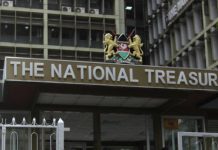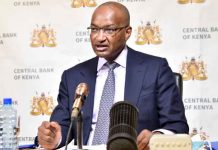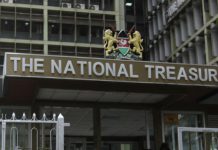Banks are yet to resume lending to firms that they had considered risky in the interest rate capping era.The banking industry campaigned for the repeal of the Banking (Amendment) Act of 2016 that introduced a ceiling on interest rates, arguing that it could not advance credit to many businesses that it deemed risky and that it could only lend at higher rates than what the law had stipulated.Banks then focused on lending to government through buying Treasury bonds and bills.
The capping law was repealed in November.Four months after the law was repealed, an analysis by investment bank EFG Hermes shows that banks have been slow to adjust and the private sector is still starved of credit, resulting in a slow economy.“Economic activity remains subdued as the impact of the rate cap repeal has yet to be seen, fiscal spending remains slow and commodity prices are depressed,” said EFG Hermes in a brief on the Kenyan economy this week.
“Credit growth remains subdued with system growth expected to be at best 10 per cent year-on-year. Banks generally remain risk averse as the recent weakness in high-end retail and corporate property prices has put pressure on collateral values.”It added that a few banks had lowered lending rates in line with the latest review by CBK’s Monetary Policy Committee, which cut the Central Bank Rate (CBR) to 8.25 per cent in January from 8.5 per cent.
Upward adjustment
Many have retained old lending rates through upward adjustment of other costs that come with taking a loan such as insurance and bank charges, said EFG.The CBR is a benchmark rate that CBK charges on loans to banks – and which they in turn use to determine interest rates on loans to customers.“While some banks have decided to follow through and reduce lending rates, others are keeping them unchanged (by adjusting the risk premium upwards) and continue to prefer sticky Treasury yields,” said EFG.“Although banks have yet to raise rates, we still see this as inevitable in the higher risk segments (retail or SME) and this should ultimately result in margin expansion over our forecast horizon.”The investment bank expects the economy’s performance to remain weak for the next year as banks take time and adjust to start lending.
The full settlement of pending bills by different government agencies is also expected to be among the drivers of the economy but this is also expected to take time,” it said. “This weakness in activity is set to gradually change over the next 12 to 18 months though as the lagged positive impact from the rate cap repeal starts to filter through; and payment of government arrears start to ease liquidity constraints and improve companies’ ability to borrow,” EFG Hermes said.“With the economy slowing – evident in weak job creation – consensus is that CBK will have more room to reduce rates in an effort to jump start economic growth. This is the case with Treasury taking a tightening bias, making monetary policy the only game in town to boost economic activity.”






